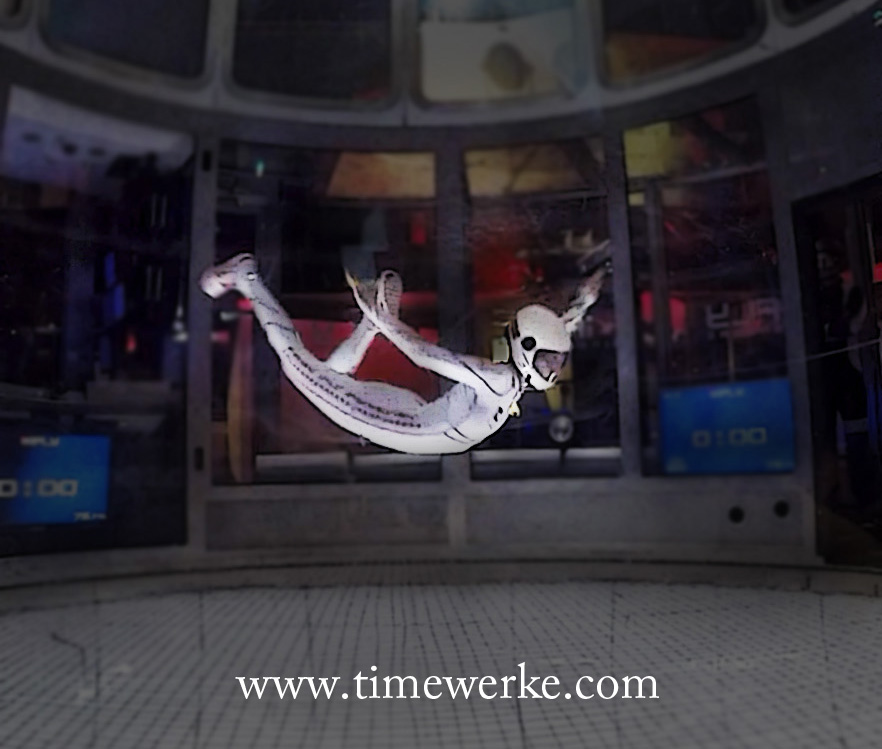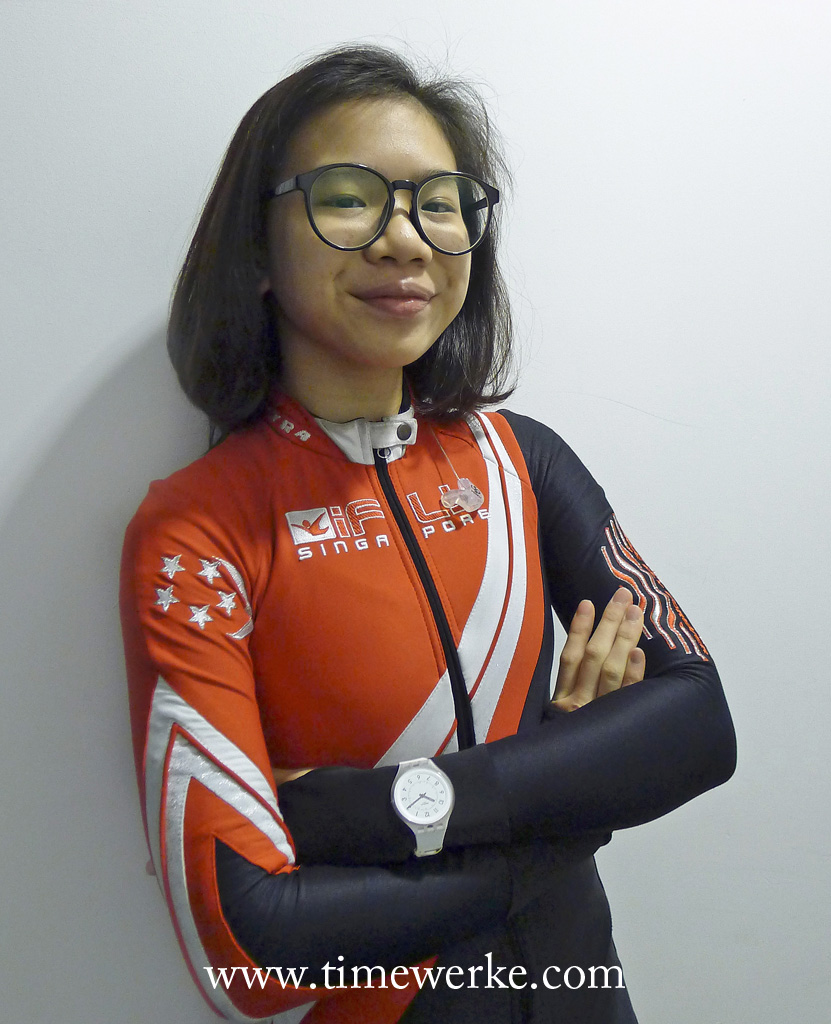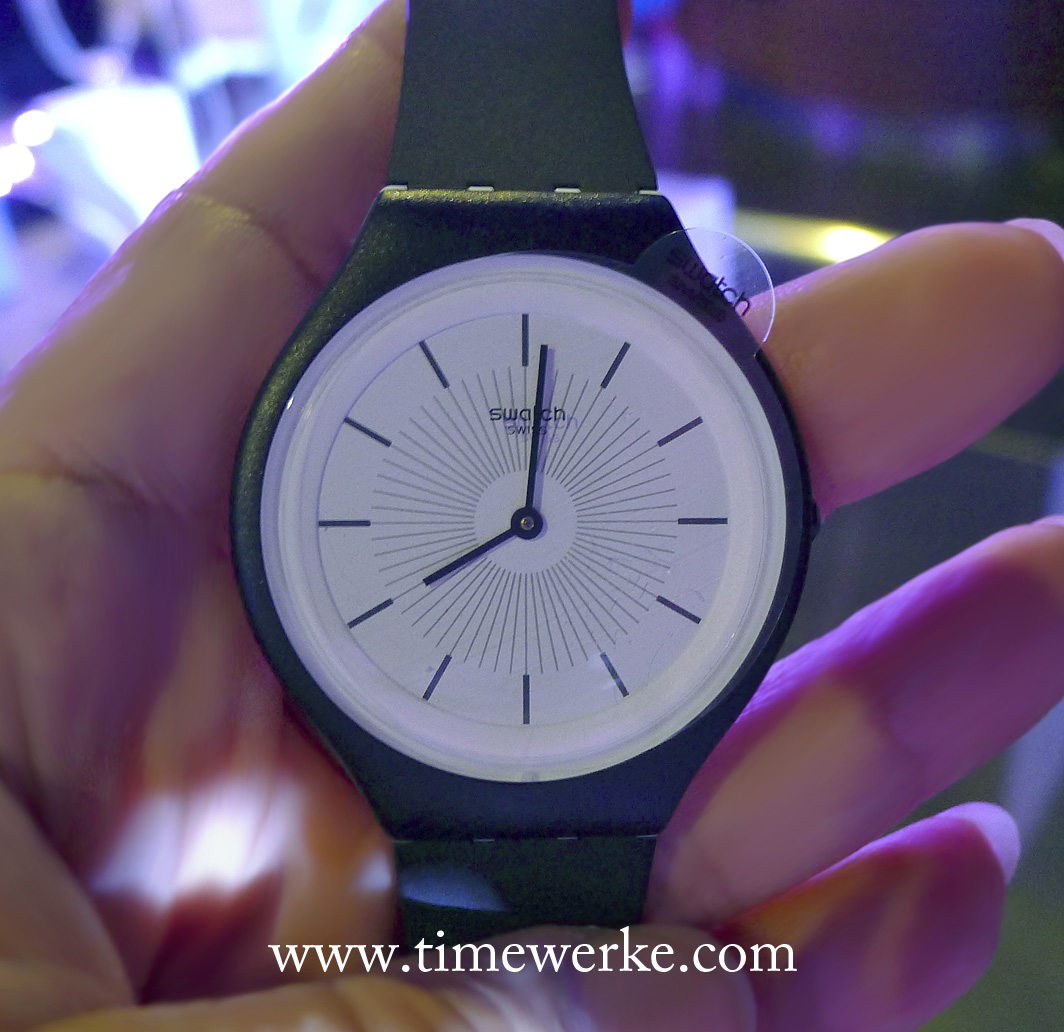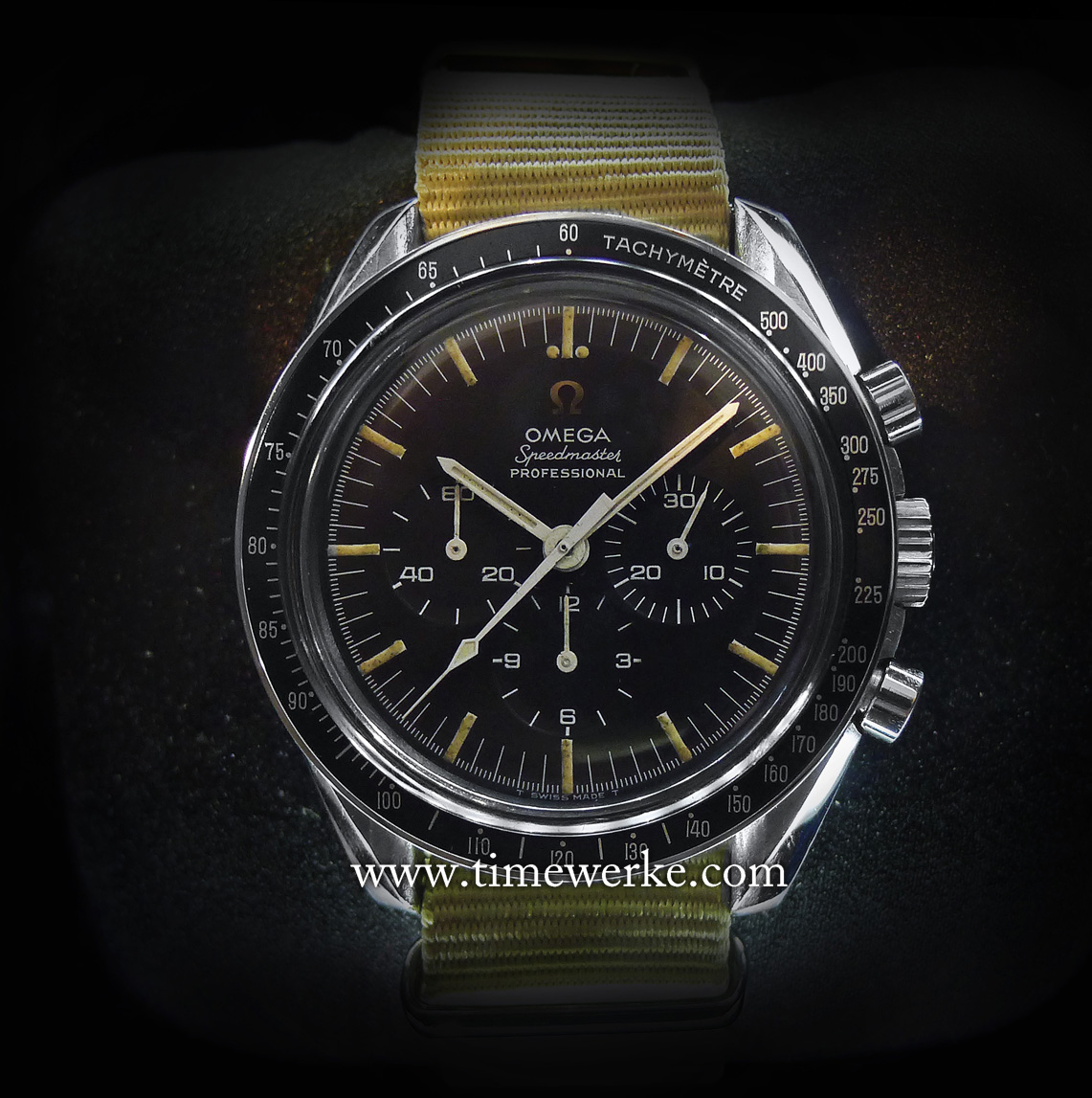
In April 2017, two months after being crowned the “World’s Fastest Flyer” (in early February 2017), 14-year-old teen Kyra Poh performed for the launch of the Swatch Skin collection at iFly Singapore on Sentosa Island. Photo: © TANG Portfolio/TimeWerke. Elfa / Timmy
In April 2017, Swatch launched their Skin collection at indoor skydiving centre, iFly Singapore located on Sentosa Island.
The star of the Swatch Skin collection launch event, apart from the watch novelties, was none other than fourteen-year-old indoor skydiver Kyra Poh. We applaud this as it is a brilliant idea to have “a world record holder” who is local to promote the watch collection.

Kyra Poh sporting the Swatch Skin Skinclass SVUM101 at iFly Singapore during the launch of the Swatch Skin. Photo: © TANG Portfolio/TimeWerke. Elfa / Timmy
Just two months before the Swatch Skin launch in Singapore, Poh was crowned the world’s fastest flyer at the Wind Games, an international indoor skydiving competition held in Catalonia, Spain organised by Windoor in February 2017.
Poh won gold medals in the solo speed category as well as in the solo freestyle segment. For the solo speed category, the indoor skydiver must complete a routine in the quickest time possible.
Poh’s time of 237.42 seconds clocked over eight rounds led her to secure pole position while defeating Spaniard Cesar Rico (243.547 seconds) and Briton Jamie Arnold (257.164 seconds).
According to a BBC report (“Kyra Poh: The 14-year-old girl who’s the ‘fastest flyer’), Poh was riding winds as fast as 230 km per hour (143 mph).
Among other things, competitors are judged by their choreography, flying difficulty, rhythm and expression in the freestyle competition.
At the April 2017 Swatch Skin collection launch, Poh performed three separate skydiving displays and was sporting the Swatch wristwatch during her flights.
Poh’s flight displays were performed with the Swatch Skinclass SVUM101 and the Skinnoir SVUB100.
View Poh’s first performance for the launch of the Swatch Skin collection at iFly Singapore below. Video: © TANG Portfolio/TimeWerke, TimeWerke Videos on YouTube.
The idea wasn’t to demonstrate the robustness of the Swatch watches while used for the sport also known as “bodyflight”; rather it is symbolic of what the Swatch Skin collection stands for. The Swatch Skin collection isn’t a pilot’s watch line after all.
Poh’s second, more graceful performance for the launch of the Swatch Skin collection at iFly Singapore can be viewed below. Video: © TANG Portfolio/TimeWerke, TimeWerke Videos on YouTube.
So what could possibly be the link between the Swatch Skin collection and indoor skydiving?
“Skin’s super-slim and almost weightless design actually tells the story of three elements: lightness, freedom and self-expression,” says Alex Liu, brand manager of Swatch in Singapore.
Poh’s third and final performance with her teammates for the launch of the Swatch Skin collection at iFly Singapore can be viewed below. Video: © TANG Portfolio/TimeWerke, TimeWerke Videos on YouTube.
In other words, Poh’s indoor skydiving displays are symbolic of the Swatch Skin watch and it includes being lightweight and expressive. In fact, the flying displays performed by Poh were inspired by Swatch Skin watches.
Indoor skydiving activities simulate free-fall conditions and are carried out in what is known as vertical wind tunnels. In such facilities, fans placed at the top of the site draw air through the flight chamber and channel it to the bottom of the tunnel.
The air is then pushed back up to the flight chamber via an inlet contractor which compresses and speeds it up prior to it re-entering the flight chamber. What results is a smooth column of air for bodyflights. More information can be found on iflyworld.com and windoor-realfly.com.
Wind tunnels were initially developed for aviation research and testing, especially in the design of aircraft. In 1871, Francis H. Wenham built the first wind tunnel in the United Kingdom.
iFly Singapore located on Sentosa Island claims to be “the world’s largest themed vertical wind tunnel”. Its wind tunnel features a flying height of 56.5 feet (17 metres) which is around five-storeys high and a diameter of 16.5 feet (5 metres).
The wind tunnel can accommodate up to 20 flyers at any one time. Interestingly, indoor skydivers can begin bodyflights when they are three years old. For outdoor skydiving, participants must be at least 18 years of age.
Each flight in a wind tunnel generally lasts a minute or 60 seconds. When skydiving, the free fall time is typically 45 seconds after having jumped off the plane.

The Swatch Skinnoir SVUB100. Kyra Poh wore this during her second and third performances during the Swatch Sking launch at iFly Singapore. Photo: © TANG Portfolio/TimeWerke. Elfa / Timmy
Indoor flyers should empty their pockets and are not encouraged to wear jewellery or watches during their bodyflights. GoPro cameras are not recommended to carried during bodyflights as well.
Foreign objects that fall off a flyer may pose as hazards and even damage the wind tunnel.
Poh sporting the Swatch Skin watch may therefore be an exception rather than the norm. Nonetheless, it would be interesting to see if watch brands thinking of promoting their pilot’s watches or similar lines will consider indoor flyers like Poh to be their “ambassadors”. We hope they do as this will not only be good for Kyra Poh but it will promote the indoor skydiving sport as well.

